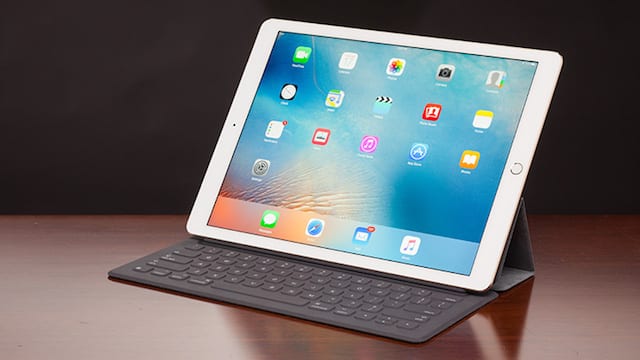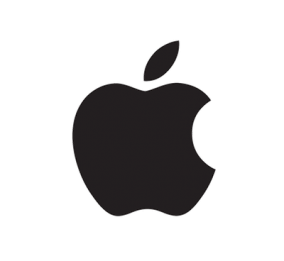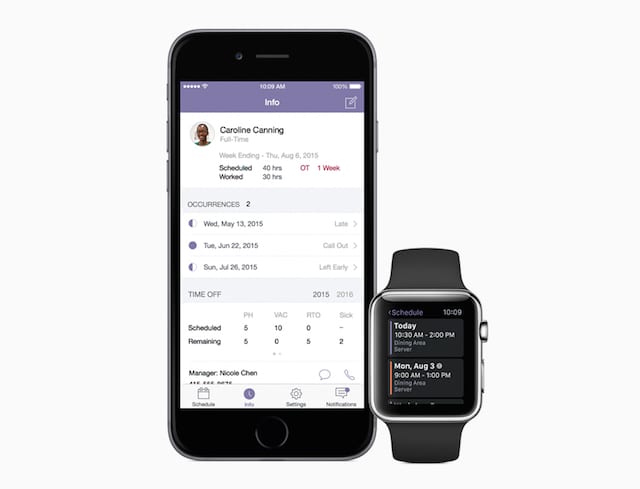Yesterday afternoon, Apple CEO Tim Cook and CFO Luca Maestri hosted the quarterly earnings call to discuss the company’s financial fortunes for the first fiscal quarter of 2017 (ending December 31, 2016) and what they expect to see in the next quarter. A quick review shows that the numbers were great — Apple ended up with another record quarter of revenues, primarily driven by robust sales of the iPhone 7, resulting in shares of AAPL being up 6.1 percent today to $128.75. But of course there was more behind those numbers than meets the eye, and that’s what this article will explain.
The iPhone Rules
 First of all, sales of the iPhone were good in the last three months of 2016. Apple sold 78.3 million iPhones in just three months, up 5 percent from the same quarter in 2015. Revenues from iPhone were a whopping $54.4 billion. What was fascinating is that Cook and Maestri intimated during the call that results could have been better.
First of all, sales of the iPhone were good in the last three months of 2016. Apple sold 78.3 million iPhones in just three months, up 5 percent from the same quarter in 2015. Revenues from iPhone were a whopping $54.4 billion. What was fascinating is that Cook and Maestri intimated during the call that results could have been better.
Related: APFS (Apple File System) comes to iOS with Update 10.3
The iPhone 7 Plus ended up being a much more popular phone than expected, resulting in insufficient supply to meet the demand for the powerful smartphone. In fact, the company finally achieved a supply/demand parity in January. The iPhone 7 Plus has a higher selling price than the smaller iPhone 7, so the average sales price for iPhones was also up from last year.
Many pundits felt that the iPhone 6s released in 2015 wasn’t enough of a change from the previous year’s model, so a lot of potential buyers just kept their phones for another year. When the iPhone 7 was released, the twin-camera design of the iPhone 7 Plus coupled with other features like its 3GB of RAM made it a runaway success. If Apple happens to release a “10th Anniversary iPhone” in 2017 with a radically different design and new, compelling features, the company could break all sales records in Q1 2018.

The iPad Needs Attention
The release of the 12.9-inch iPad Pro in late November of 2015 and the off-season release of the 9.7-inch model of the Pro in late March, 2016 did little to excite the public, with iPad sales down 19 percent year over year, and revenues down a full 22 percent. This isn’t just an Apple thing — sales of tablets are down for almost all manufacturers, and Apple actually has the lion’s share of the tablet market in many countries.
During the Q&A session with analysts, Cook made some comments that made it sound like new iPad Pro models will be on the way in the next 90 days. There has been speculation about a “mid-size” 10.5-inch iPad Pro, and perhaps we’ll see that device released along with newer, faster, and more capable iPad Pros. Apple also needs to pay attention to the iPad mini, which hasn’t been updated in over a year. That device could benefit from a price cut (the least expensive Wi-Fi-only, 32GB model starts at $399) to make it more competitive with the cheap knockoff Android tablets and provide an entry-level model for those who are thinking about getting a tablet.
Still, there are bright spots in the iPad picture. Apple still sold 13.1 million of the devices, and Cook recited a list of companies that are embracing iPad and iPhone as enterprise devices.
Mac Bounces Back
The Mac seemed to do well during the quarter, with sales up about 1 percent (5.4 million units) in a market where PC sales are declining for most other manufacturers. Mac revenues were a much happier story, up a full 7 percent over the year-ago quarter.
Why the big jump in revenues with just a modest increase in sales? The much higher average selling price of the very popular 2016 MacBook Pros made a tremendous difference.
Apple still needs to rejuvenate the entire Mac line. The Mac Pro has languished since late 2013, the Mac mini hasn’t been touched since late 2014, and the iMac design could be improved with better sound, faster CPU and GPU, and expandability. There’s probably enough pent-up demand in the ranks of creative professionals to make 2017 the year of the Mac if Apple can roll out new models soon.
Services Are Getting Big
 Apple’s services business — including the App Stores, iCloud, Apple Music, Apple Care, Apple Pay, iTunes, licensing and other services — is getting to be almost as big a business ($7.1 billion in revenues for the quarter) as the Mac business ($7.2 billion in revenues during the same period). Services are exploding as a business, and Cook noted that Apple expects half of its revenue to come from services within 4 years or so. Based on the double-digit growth the company keeps seeing for service, he’s probably correct. Services revenue was up 18 percent year over year.
Apple’s services business — including the App Stores, iCloud, Apple Music, Apple Care, Apple Pay, iTunes, licensing and other services — is getting to be almost as big a business ($7.1 billion in revenues for the quarter) as the Mac business ($7.2 billion in revenues during the same period). Services are exploding as a business, and Cook noted that Apple expects half of its revenue to come from services within 4 years or so. Based on the double-digit growth the company keeps seeing for service, he’s probably correct. Services revenue was up 18 percent year over year.
Other Products Are Big, But…
Apple now calls out “Other Products” in the Summary Data report as a separate line item. This year, revenues of those products — including Apple TV, Apple Watch, Beats products, iPod, and Apple-branded and third-party accessories — were down 8 percent. At the same time, Cook noted that the Apple Watch and AirPods were wildly successful.
Why the contradiction? It seems to be a case of the company not being able to estimate demand well enough, or its manufacturing partners not being able to ramp up production fast enough. In particular, Cook said that AirPods were in a supply deficit and will finally get out of it this month. If the company can’t get enough of these products to sell to waiting customers, they’re just letting money sit on the table.
Cook also brought up the fact that Apple has it’s “toe in the water” for producing its own content for distribution via Apple TV and Apple Music, both factors that could drastically increase sales of Apple TV equipment and Apple Music subscriptions. This bodes well for future revenue growth in this area.
Time For A Tax Holiday
 Apple has about $246.1 billion in cash and marketable securities squirreled away that could be used for major acquisitions, research and development, and more. However, about $231.3 billion of that hoard is held overseas, since bringing it back to the US would result in taxation at high corporate rates.
Apple has about $246.1 billion in cash and marketable securities squirreled away that could be used for major acquisitions, research and development, and more. However, about $231.3 billion of that hoard is held overseas, since bringing it back to the US would result in taxation at high corporate rates.
One analyst noted that the time is ripe for a possible “tax holiday” for repatriating those overseas funds at a lower tax rate, what with the new administration being more business-friendly than the last. Apple believes that there is broad support for that tax holiday, and bringing that huge amount of money back to America even at a low special tax rate would be good for the company and for the nation as a whole.
The Future
Cook and Maestri always try to paint a rosy picture of the upcoming year or quarter, and thing were no different on yesterday’s call. However, the company is probably better placed to see continued growth in most product categories provided that it — and its manufacturing partners — are able to respond to higher-than-anticipated product demand more quickly. This may be another case where Apple could conceivably benefit from repatriation of that cash hoard, spending it on building fast, flexible robotic plants in the US that could crank out product at a moment’s notice.
Apple’s enterprise partnerships with Cisco and IBM are really paying dividends, and Cook noted that SAP will soon release its software development kit for iOS. Considering the number of corporations that are dependent on SAP systems, there’s a huge opportunity for Apple to sell even more iPhones and iPads in the corporate marketplace.
If you listened to the Q1 2017 earnings call yesterday and have other comments you’d like to add to this brief summary, please do so below. The call can be heard as a replay by visiting http://www.apple.com/investor/earnings-call/ during the next two weeks.








